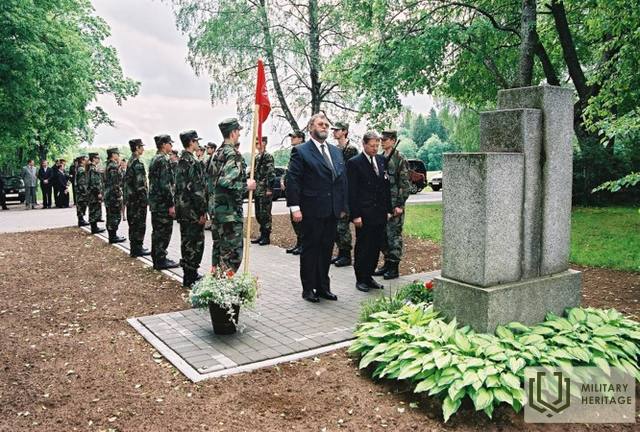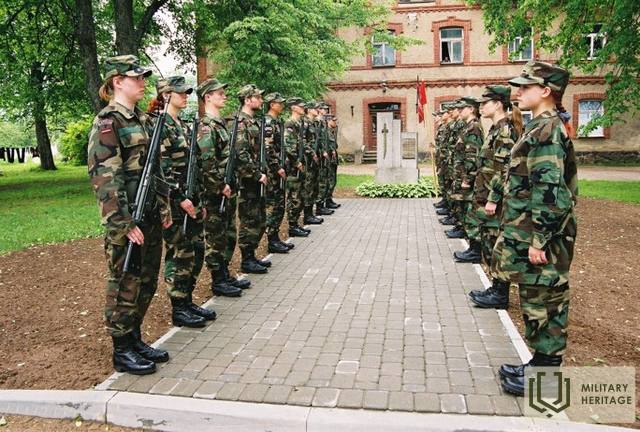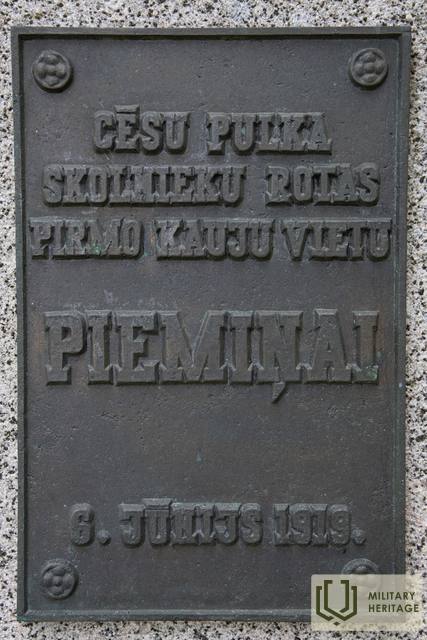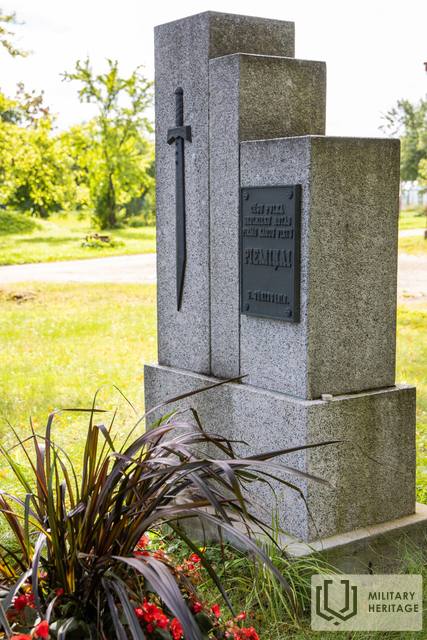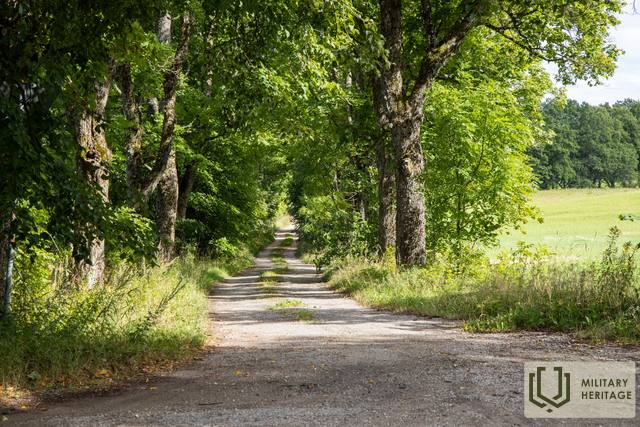Monument to the students' ornaments at the battlefield
Memorialinis vieta

 86
86



On the side of the Cēsis-Āraiši highway, near the former Livu parish.
A monument dedicated to the ornament of volunteers of the Cēsis Regiment, who took part in the battles of Cēsis in 1919, can be seen.
The monument was unveiled on May 29, 1930 near the former Livu parish.
The project of the monument was developed by the former volunteer of the school ornament K.Dzirkalis, the installation works were performed by A.Sproģis firm in Cēsis.
Bronze details according to the author's drawing were created by M.Pluka, they were cast at V.Minūta's factory in Riga. After World War II, the monument was destroyed.
Restored on June 6, 1989, the authors of the restored monument are sculptors A. Jansons and M. Balttiņa, architect I. Timermanis.
Later, the bronze sword and plate were removed for safety reasons and replaced with wooden parts.
Panaudoti šaltiniai ir literatūra:
https://www.zudusilatvija.lv/objects/object/5575
Tālis Pumpuriņš, Cēsis Museum of History and Art
Susijusi laiko juosta
Susijusi istorija
Paminklas, skirtas Cėsių pulko studentų būriui prie buvusių Līvu parapijos namų
1919 m. Cėsių mūšiuose dalyvavo Cėsių pulko savanorių moksleivių kuopa, kuri birželio 5 d. Cėsių vidurinės mokyklos patalpose buvo suformuota iš 108 jaunuolių iš Valmieros ir Cėsių mokyklų. Jau naktį iš birželio 5 d. į 6 d., maždaug valandai po vidurnakčio, suskambėjo aliarmas ir įmonei buvo liepta persikelti į vietą. Kuopa žengė į Mācītājmuiža – Meijermuiža liniją, kuri buvo laikoma svarbiausia mūšio zona.
Pirmajame mūšyje buvo sužeisti keli studentai, tačiau tą pačią dieną nuo labai rimtos skrandžio žaizdos mirė Edgars Krieviņš iš Valmiera. Birželio 13 d., Valmieros miesto kapinėse, su karine pagyrimu palaidotas. Edgaras Krieviņš po mirties buvo apdovanotas Lāčplėsio karo ordinu.
Neįprasta paminklo Cėsių pulko mokyklinei kuopai istorija
1919 m. Cėsių mūšiuose dalyvavo Cėsių pulko savanorių mokinių kuopa, kuri birželio 5 d. buvusios Cėsių vokiečių progimnazijos patalpose Dārza gatvėje (dabar Bērzaines g. 4) susibūrė kaip kovinis būrys iš 108 Valmieros ir Cėsių mokyklų jaunuolių. Jau naktį iš birželio 5 d. į 6 d., maždaug valandą po vidurnakčio, nuskambėjo aliarmas ir įmonei buvo liepta persikelti į vietą. Kuopa žengė į Mācītājmuiža – Meijermuiža liniją, kuri buvo laikoma svarbiausia mūšio zona.
Cėsių mūšio pradžia, eiga ir pabaiga
Pergalei Cėsių mūšyje buvo lemta tapti lūžiu latvių ir estų kovoje už savo šalies nepriklausomybę. Ši pergalė padarė tašką Andrievo Niedros vyriausybės ir vokiečių generolo Rüdigerio von der Goltzo planams užkariauti Baltijos šalis. Vietoj to Liepojoje savo veiklą atnaujino Laikinoji Latvijos vyriausybė, vadovaujama Kārlio Ulmanio.







